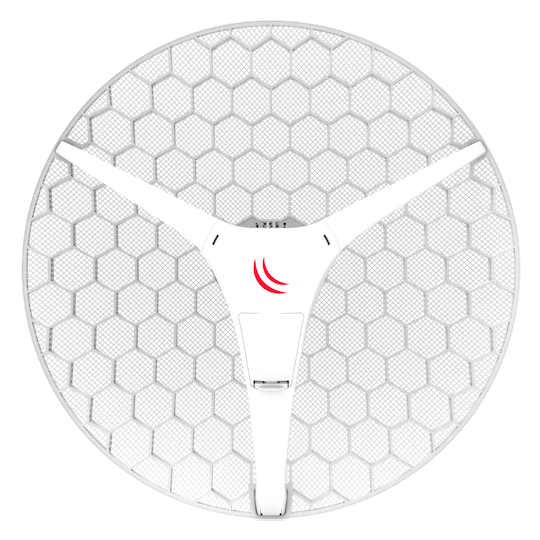
MikroTik: MikroTik Network Associate with LABS
***This course is not officially sponsored by MikroTik and not an authorized course by MikroTik. We respect the Trademarks of the mentioned company and institution.***
Description
The MikroTik Certified Network Associate certification is an essential starting point for any student or engineer beginning their journey with MikroTik. It serves as a foundational course and a prerequisite for more advanced MikroTik courses.
With this in mind, I have designed this course to offer you a comprehensive introduction to MikroTik. It aims to cover all the topics included in the MikroTik Certified Network Associate track.
This course includes theoretical knowledge but places a strong emphasis on practical labs. Therefore, if you plan to follow along with this course, I recommend that you have access to 1 PC and 2 MikroTik routers, along with 5 UTP cables.
During this course, you will explore the following topics:
- About MikroTik
- First time accessing the router
- RouterOS Command line interface (CLI)
- RouterOS CLI principales
- Initial configuration (internet access)
- Upgrading RouterOS
- Router Identity
- Manager RouterOS logins
- Manage RouterOS services
- Managing configuration backups
- Resetting a RouterOS device
- Reinstalling a RouterOS device (Netinstall)
- RouterOC license levels
- DHCP server and client
- Address Resolution Protocol (ARP)
- Bridging overview
- Bridge wireless networks
- Routing overview
- Static routing
- Firewall principles
- Firewall Filter in action
- Destination NAT
- FastTrack
- Simple Queue
- One simple queue for the whole network (PCQ)
- PPP settings
- IP pool
- PPPoe
- PPTP and SSTP
- RouterOS tools (Email, Netwatch, Ping, Traceroute, Profiler)
- Interface traffic monitor
- Torch
- Graphs
- The Dude
- Wireless Fundamentals
- Wireless AP Bridge vs Station
- Wireless Default authenticate
- Wireless Access list
This course covers a wide range of topics, each with its own set of subtopics. We will conduct numerous practical labs on each topic to ensure you gain hands-on experience in configuring these aspects on MikroTik.
Ultimately, if your aim is to comprehensively understand all MikroTik Certified Network Associate topics.
Who this course is for
- Engineers who want to learn how to use MikroTik products in their networks
- Students who want to learn topics in the MikroTik Certified Network Associate exam
What you'll learn
- Understand the outline of the MikroTik Certified Network Associate course
- Understand what is MikroTik and where it is located
- Understand the difference between RouterOS and RouterBOARD
- Know how to get 1st access on the MikroTik router using WebFig
- Understand how to use Quick Set to make your router working
- Understand the usage of the Winbox utility to connect to the router via MAC address
- Understand the difference between Telnet and SSH and how to use them to connect to the MikroTik router
- Understand the basic command line syntax's on MikroTik terminal
- Know how to connect the MikroTik router to the internet
- Understand how to configure DHCP client
- Understand how to share internet to the LAN PCs using the NAT
- Be able to troubleshoot internet connection problem on your MikroTik router and your LAN PCs
- Know how to upgrade the RouterOS via 3 different ways
- Understand the function of the RouterBOOT & how you can upgrade it
- Understand how to create users and custom groups
- Understand how to use Public and Private keys to connect via SSH
- Managing RouterOS Services
- Understand the difference between the Binary and export backup
- Understand how to reset the RouterOS configuration from Winbox
- Understand how to do Hardware reset on RouterOS routers
- Understand how to use Netinstall to reflash the MikroTik RoutersOS
- Understand the different type of licenses for RouterOS and CHR
- Understand and configure DHCP Server and DHCP client
- Understand APR and manipulate it on MikroTik (enabled, disabled, ARP-Reply)
- Understand what is the function of the Bridge
- Understand how and where to use Station Bridge on the Wireless
- Have an overview idea about MikroTik Firewall
- Understand what is the function of connection tracking and its affect to the Firewall
- Understand what are the connection states and how to configure them correctly on the Firewall
- Understand how to redirect all DNS queries to the MikroTik Router
- Understand the usage of the DST-NAT
- Know what is VPN and why it is important
- Understand the PPTP protocol
- Know how to configure PPTP site-to-site VPN on MikroTik RouterOS
- Understand the SSTP protocol
- Understand how to configure SSTP site-to-site VPN with and without certificates
- Understand how to configure SSTP remote access VPN
- Understand the different types of Routing
- Understand the function of administrative distance in routing
- Understand and configure FastTrack on IP Firewall
- Understand and configure PPPoE Server and client
- Understand how simple queues work
- Know how to configure simple queues
- Understand and configure burst on QOS
- Configure one simple queue for the whole network (PCQ)
- Understand and configure Burst on MikroTik
- Configure the Router to be able to send emails
- Monitor network and devices using Netwatch tool and use scripting to send emails as notifications
- Understand Ping tool, Traceroute tool and CPU profile tool
- Understand torch tool, interface monitor and graph
- Understand wireless fundamentals
- Understand the different wireless standards and Frequencies
- Configure a wireless AP Bridge on MikroTik
- Connect MikroTik Wireless station to the AP
- Understand the access list on wireless for MAC filtering
Requirements
- Basic networking skills
- Knowledge of the TCP/IP protocol
- Basic computer skills












